|
|
Science Fiction Theatre
by Lee Weinstein
Way back in the early days of television, before such classic science fiction anthology series like The Outer Limits and The Twilight Zone, and other adult science fiction on television, there was Science Fiction Theatre.
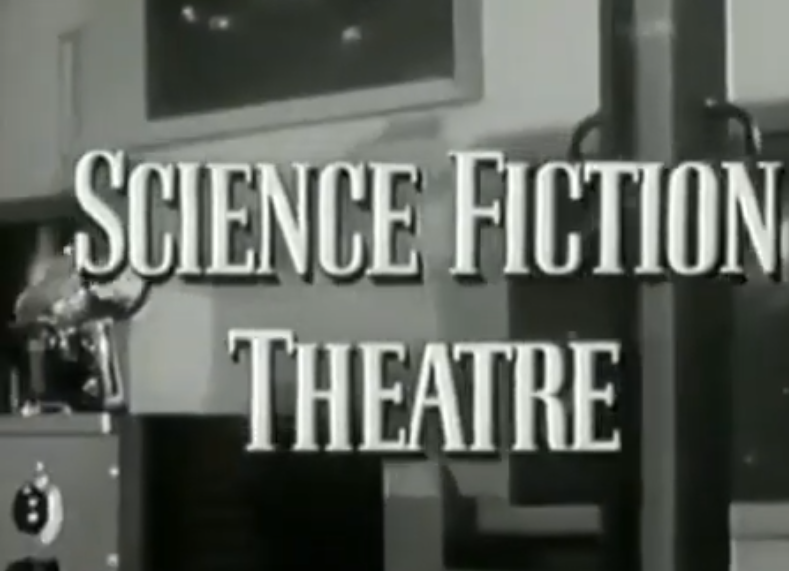
Yes, it was hokey by today's standards. Yes, it is often badly dated. But in the spring of 1955, when the show premiered, it was quite innovative. At the time, science fiction was perceived as strictly for the kids. Contemporary genre shows included such fare as Rocky Jones, Space Ranger, and Commando Cody, Sky Marshall of the Universe.
Science Fiction Theatre was something different. It was aimed at adults. In addition, unlike earlier genre shows, it was shot on film and remained in syndication for decades. Its 78 episodes had no rocket ships or ray guns and if some of the characters hinted at being of extraterrestrial origin, they appeared to be human. The series was, or at least pretended to be, well-based in real science. The credits at the end of the first season episodes list one Maxwell Smith as "scientific adviser on electronics and radar operation." Several episodes did deal with such paranormal phenomena as telepathy, but at the time this was the subject of legitimate scientific inquiry.
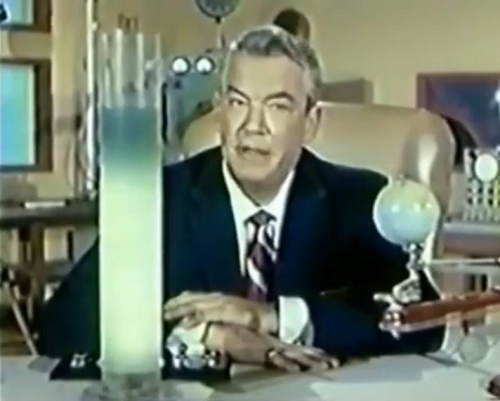
As the show opened, the camera panned across a laboratory filled with electronic equipment, accompanied by the orchestral strains of the theme music, before coming to rest on the host, Truman Bradley, seated at his desk. He then introduced each episode by performing on-camera experiments to demonstrate the scientific principle relating to the story's theme. At the conclusion of each show he would return to assure the audience that the story was only fiction, but that the principle involved could one day become a reality. Bradley, a radio announcer and sometime actor, lent such an authoritative touch to the show that most us grew up thinking he was actually a scientist.
One of the earliest series to be shot in color (at least for its first season) it was the brainchild of Ivan Tors, who had written and produced science fiction films with an emphasis on science fact such as Magnetic Monster in 1953 and Gog a year later. He was later to produce such popular series as Sea Hunt, Flipper, and The Man and the Challenge.
Viewed today, one is struck by the extremely conservative approach to the subject matter. Such episodes as "The Phantom Car," about a remote-controlled automobile, and "Signals from the Heart," in which a policeman is given a heart monitor with a radio transmitter, have long since been bypassed by the progress of science in the real world. Other episodes anticipated robotic vacuum cleaners, space stations and infrared photography.
The teleplays often come across as somewhat static; the cinematography is simple and direct. The show was filmed on a low budget for syndication, often on just a few sets. Special effects were almost non-existent.
Nonetheless, some segments hold up better than others, and many had truly imaginative ideas.
Scanning the credits reveals a host of impressive names, both in front of and behind the camera. Some of the more well-known actors to appear in the series were Vincent Price, Basil Rathbone, Edmund Gwenn, Gene Barry, Howard Duff, and Dane Clark. Other familiar faces included Martin Milner, June Lockhart, Don DeFore, Warren Stevens, Skip Homeier, William Schallert and Jean Byron.
Several early episodes were directed by Jack Arnold (The Incredible Shrinking Man, It Came From Outer Space), and many more by Herbert L. Strock (Magnetic Monster, Gog, I Was a Teenage Frankenstein). One was helmed by that king of gimmickry, William Castle (The Tingler, House on Haunted Hill).
Although most of the episodes were written by screen writers, often working from treatments by Tors himself, there are adaptions of stories by Stanley G. Weinbaum and Jack Finney, as well as two original screenplays by Meyer Dolinsky, who later went on to write several classic Outer Limits episodes, a Star Trek episode (''Plato's Stepchildren'', and a science fiction novel.
The series premiered in April of 1955 with "Beyond". A test pilot bails out when he is pursued by a torpedo shaped UFO. The authorities convince him that he had somehow imagined his fountain pen to be a large object outside the craft. They have second thoughts, however, when they discover that the entire cockpit has mysteriously become magnetized.
Variety magazine said that the show had "...too much science and too little fiction..." complaining about the long Truman Bradley introduction cutting into story time, and the viewer being told rather than shown dramatically important parts of the narrative.
While the protagonist of the first episode was a test pilot, the majority of the stories featured a scientist of some sort as a major character.
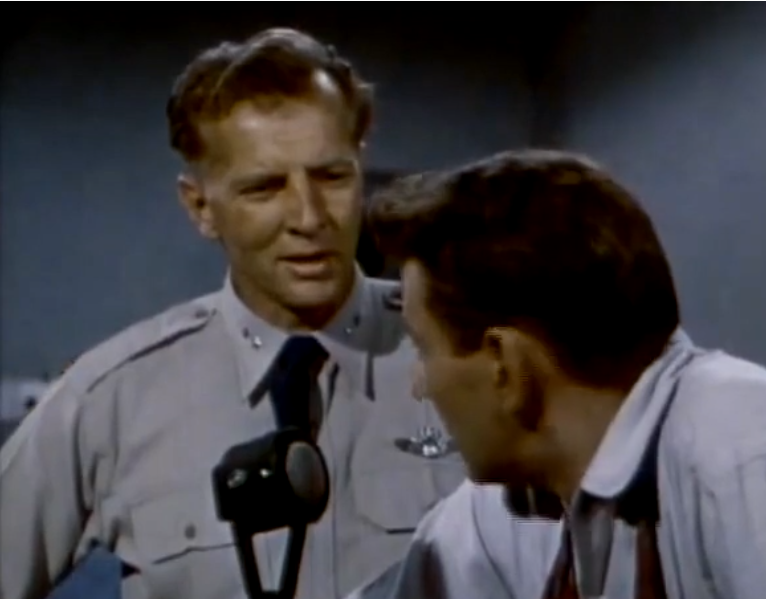
"Encounter Beyond Mach 2"
The second episode, however, was an exception to this, and was one of the series' best. "Time is Just a Place," adapted from Jack Finney's short story "Such Interesting Neighbors," and directed by Jack Arnold, starred Don DeFore and Marie Windsor as a suburban couple, who discover that their new neighbors (Warren Stevens and Peggy O'Connor) are actually visitors from the future. While Finney's story was light in tone, this rather dark adaptation, was called by Variety "...a spine tingler in the best flesh-creeping tradition."
Another early episode, "No Food for Thought," also directed by Arnold, demonstrates some of the series limitations. The story concerns a scientist experimenting with a synthetic food designed to alleviate world hunger. But the food is somehow linked to a deadly virus, and once on it, no organism can return to natural food. Arnold builds up a good deal of dramatic tension at the beginning with the mysterious death of one of the research team. The county health officer finally gains admission and meets the reclusive scientist in charge (Otto Kruger). The nature of the experiments, the problems that have ensued, and the resolution of the problems all happen in about ten minutes worth of dialog. There is enough material to make a full length movie. Robert M. Fresco, who wrote the teleplay, went on to write the screenplay for Tarantula (1958), in which he worked out some of the ideas at greater length.
In many of the episodes Bradley's resonant voice narrates the events that transpire between scenes, "telling rather than showing" as Variety had put it.
Another memorable episode, "Beyond Return," is based on Stanley Weinbaum's "Adaptive Ultimate." A young woman near death is given an experimental drug by a doctor that greatly increases her adaptability. After adapting to and overcoming terminal tuberculosis, she becomes a human chameleon capable even of murder to advance herself.
"The Hastings Secret," has a plot line typical of many of the episodes. An older scientist who studies termites and has developed a new kind of solvent, mysteriously vanishes in Peru. His scientist-daughter (Barbara Hale) and her assistant (Bill Williams) travel to Peru to investigate. They discover that he has died, but determine to acquaint themselves with the materials of his research. It is implied at the end that they will continue with his research project.
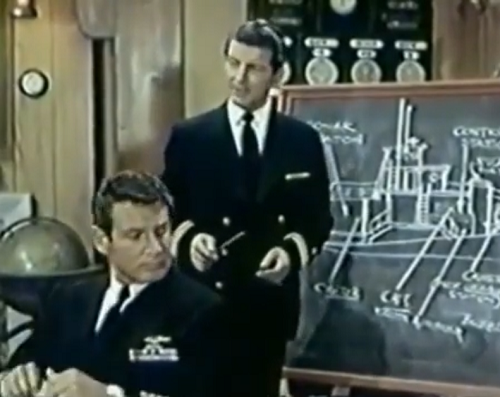
Gene Barry in "The World Below"
The pair also co-starred in the similarly-themed episode “Jupitron,” which in some ways eerily anticipates alien abductions, as a scientist and his wife relaxing on a beach suddenly find themselves transported to a laboratory on a moon of Jupiter. In a dreamlike encounter with a long-missing scientist in a sealed off room, they are given a clue on how to solve the world's hunger problem, which they then take back to earth. Williams and Hale, who were married in real life, had a son (William Katt) who went on to star in another science fiction series many years later (The Greatest American Hero).
A common plot device was the mystery. In some episodes a murderer uses a scientific advance either to commit the crime or to frame someone else in the process. In "One Thousand Eyes" a police detective, played by Vincent Price, solves the murder of a scientist who had developed an experimental form of photography that worked in darkness. Other examples are "The Sound of Murder" with Howard Duff, involving a voice synthesizer, and "Death at 2 AM," about a drug that increases human strength tremendously.
Extraterrestrials make appearances in a number of episodes, normally in the form of ordinary-looking humans who either benefit or threaten us with some sort of advanced and unexplained technology.
A rare humorous episode that holds up rather well features Edmund Gwenn (Miracle on 34th Street) as an enthusiastic and eccentric scientist of alien origin, who is intent on bestowing super-scientific gifts on disbelieving scientists.
"Negative Man," about a computer technician who has his IQ and sense of hearing boosted to superhuman levels when he is blasted with 90,000 volts of electricity, is interesting for a rare TV appearance of an adult Carl (Alfalfa) Switzer, of Our Gang fame, who supports Dane Clark's lead.
"And the Stones Began to Move" with Basil Rathbone, better known for his film portrayal of Sherlock Holmes, concerns a rare type of gem, found in Egypt, that has the property of counteracting gravity.
"Conversation with an Ape" although primarily about a zoologist (Hugh Beaumont of Leave it to Beaver) teaching a chimpanzee to communicate with him using a keyboard, also discovers that the chimp can read his thoughts.
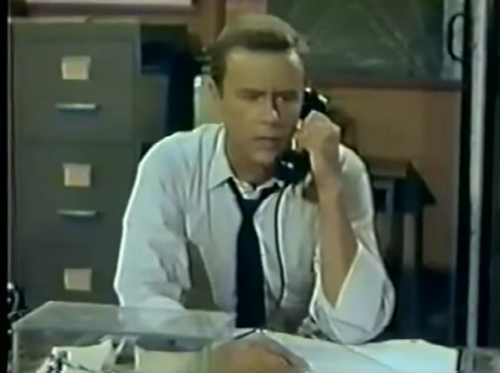
Marshall Thompson in "The World Below"
Halfway through its run, in the spring of 1956, some changes were made. While later series sometimes started out in black and white before going to color, Science Fiction Theatre did the opposite. The second season, beginning with the episode "Signals from the Heart,” was filmed in lower budget black and white. However, according to Variety, Bradley's introductions were considerably shortened and the "scientific gobbledy-gook," as the journal put it, was cut down as well, leading to "a considerable overall improvement." Maxwell Smith was now listed as “scientific adviser on electronics and radiation.”
Meyer Dolinsky, who was later to write such memorable Outer Limits episodes, as "The Architects of Fear," contributed two second season episodes. In “Bolt of Lighting” an older scientist has died in a mysterious explosion that destroyed an entire building. A young scientist is recruited by the government to determine the cause of the explosion. He manages to reconstruct the late man's research, figure out the cause of the explosion, and at the end commits himself to carrying the work on.
Dolinsky's other contribution, “The Sound that Kills,” is a murder mystery. A scientist at conference is murdered by ultrasonic vibrations and his papers stolen. The killer is found by means of a camera that can see through the hotel building by using mesons, rather than light. to form the images.
Another notable second season episode is "Operation Flypaper," with Vincent Price again, a mystery involving missing time, the disappearance of scientific equipment, and a device that freezes people into a kind of trance.
The "Magic Suitcase," one of the last episodes to air in January of 1957, concerns a mysterious stranger who leaves behind a suitcase capable of generating an almost infinite amount of power.
"Bulletproof," with Christopher Dark, concerning a criminal with a metallic foil that can stop bullets, anticipates stories about the alleged Roswell UFO crash. It seems he found the metal at what appears to be a UFO landing site in the desert.
"Who is this Man?" directed by William Castle, stands out in its pacing. A psychologist treats an excessively shy and fearful college student by hypnosis The student is regressed to a previous life as a criminal who was executed for murder in 1888. “The Unguided Missile” deals with a form of inadvertent telepathy mediated by microwaves.
Perhaps the most imaginative episode was "Living Lights," which actually features a non-human life-form. A husband-wife team of scientists recreate the conditions on Venus in a large bell jar in their apartment, with borrowed laboratory equipment. Energy beings, in the form of the titular living lights, which resemble spotlight beams, appear in the bell jar and escape through the glass, creating problems for the experimenters. It bears some similarities to the Outer Limits episode "Wolf 359" a decade later.
The show definitely left its mark on later genre television. The one earlier adult science fiction anthology, Tales of Tomorrow (1951-1953), was done live, was not rerun in syndication and had no host to introduce the stories. The introductions and epilogues by Bradley became a template for later anthologies like The Twilight Zone, Alfred Hitchcock Presents, One Step Beyond, and others.
The series likely had a larger audience than Tales of Tomorrow, because it was on film and endlessly rerun. Although not aired very often today, it did show that science fiction could appeal to a mass adult audience, and paved the way not only for anthologies like Twilight Zone, The Outer Limits, and Amazing Stories, but also for adult series fare such as Star Trek and Babylon 5.
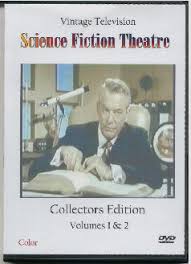
Science Fiction Theatre on dvd
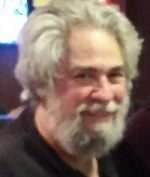 |
ABOUT THE AUTHOR
Lee Weinstein is a retired librarian and a life-long science fiction fan who also dabbles in oil painting. His essays have appeared in Studies in Weird Fiction, The New York Review of Science Fiction and elsewhere. He is a contributor to The Encyclopedia of Science Fiction, (the online 3rd edition), Horror Literature through History and has edited several short story collections. He and his wife reside in Philadelphia, PA with their black cat, Annabel. |
 |
Click on the icons for new features in The Thunder Child.
Radiation Theater: 1950s Sci Fi Movies Discussion Boards
The Sand Rock Sentinel: Ripped From the Headlines of 1950s Sci Fi Films
|
 |
|
|






